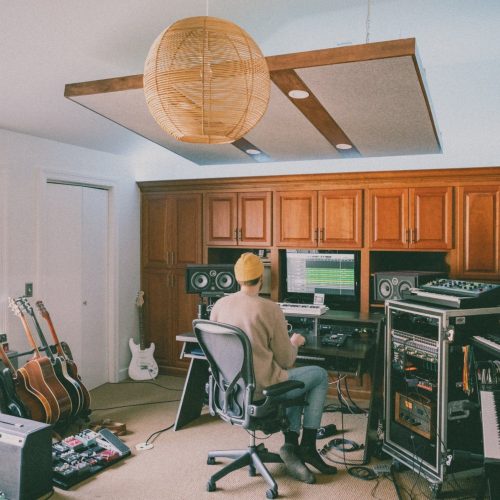The power that music has to move you is phenomenal. It seems to physically make a part of your brain go from one place to another – in this case happy to melancholy, simple acceptance to complicated doubt, light to shade, sun to clouds.
That’s what Jason Wozniak’s “It’s All The Same” does to me.
The squeak of a chair, or perhaps Wozniak himself picking up a plectrum, introduces the track, like indistinct creaking just before the start of something. Suddenly someone starts the strong picking of the song’s few chords, and Wozniak’s pure vocals join in after a pass.
Alyssa Kinn starts to harmonize, and a cloud of some Rhodes-like keyboard ebbs behind the guitar. This stays for the rest of the song and contributes to the feeling that Wozniak and Kinn are floating in space, or swimming through a dreamland.
Nothing is resolved, nothing is certain. You’re gently on edge for the whole listening experience.
With all the technology at our fingertips, it’s refreshing when someone uses it sparingly and subtely, like at the end of the first verse when the cloud of keyboard shimmers and stops perfectly in time with the song, then envelopes us again as the song continues. The effect is a brief moment of clarity, as though we are suddenly close to consciousness again.
Wozniak’s vocals double at one point, so quietly in the background as to almost miss them, but apart from that, the song is a brief, beautiful moment of guitar and harmony.
Or it’s the sound of two people lost in ethereal endless eternity.
The unresolved air of the song’s chords are mirrored in the lyrics. At the start of the song Wozniak claims:
I wanted nothing to do with it
The work is done
I held my tongue
But the second time around, things have changed:
I wanted something to do with it
The work’s begun
I said too much
Perhaps the song is a meditation on trying to create something and the frustration of it being blocked or difficult to form. Nearing the end of the song they sing:
I’ve had the answer all along
Erase whatever isn’t love
Or that’s what they seem to sing. Fitting with the song, it’s difficult to find clarity through the haze. But that’s good. The song retains its mystery for another day, and there’s power in the uncertainty: the power of the words to refuse a singular interpretation, and the power of the music to move the listener from one state to another.
After hearing the song, I was in a different place, I was less sure, more emotionally vulnerable. I was on a comedown, or woozily trying to shake free of a dream that refused to let me go: a dream that Wozniak and Kinn seem lost inside every time this song plays.







